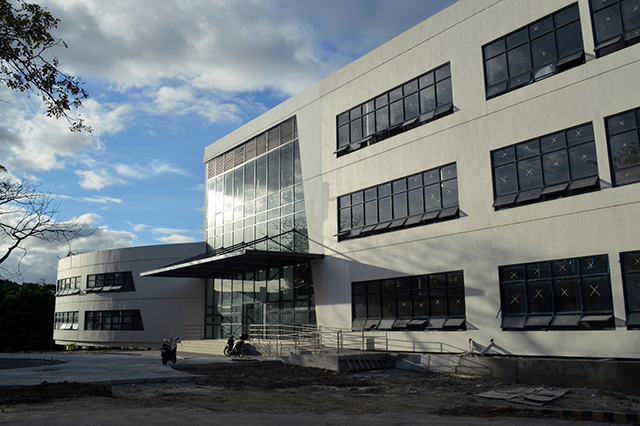The testing kits developed by the University of the Philippines, which the Food and Drug Administration recently approved, will cost the government much less than the foreign ones currently being used to detect cases of the novel coronavirus in the country.
The FDA issued a Certificate of Exemption for the detection kit on March 10 following the sudden increase in the number of confirmed cases from 20 to 33.
This tool called the SARS-CoV-2 PCR Detection Kit was developed by UP scientist Dr. Raul Destura and his team from UP’s National Institute of Health and it was funded by the Department of Science and Technology.
The FDA’s approval came after a month it was developed. The UP Office of the Student Regent announced this on social media, calling for the public to support local tool.
“Detection kit for COVID-19 developed by UP scientists in February approved by FDA to be used to test samples of the disease in the country. Still waiting for advisory from DOH,” the office’s post read.
“We urge the UP community & the public to call for funding for immediate, pro-people healthcare now!” it added.
The local testing kit also costs only P1,320 per test, the DOST disclosed, a lot cheaper compared to the hefty P8,500 price tag of foreign kits being used by the health department.
Overall, it costs P28,000 good for 25 tests, alongside RNA extraction kit which costs P10,000 for 50 reactions.
These devices will be used for field testing with gene sequencing at the Philippine Genome Center (PGC).
Some Filipinos online commended this cost-effective benefit. Blogger Tonyo Cruz even started a hashtag #SalamatUP on Twitter as a way of recognizing the local scientists’ development.
Meanwhile, activist Isaac Punzalan said the government should finance more of such endeavors.
“I say yung bilyones na nakalaan ngayon para sa mga gera at pananakot ay ilipat na para sa kapakanan ng bayan. Pro-people healthcare now!” Punzalan said.
Long process of validation
The testing kit has actually been available since January. However, Destura and his team needed the DOH’s validation first before it can be used by the public.
The PGC deputy executive director revealed in an interview at OneNews “The Chief” that the center offered to help DOH in screening suspected individuals with the virus.
“But I think we just need to coordinate all our activities with the DOH. We are already discussing with them as an office so that later on, we can be part of the rapid response in terms of diagnostic,” Destura previously said.
He said they developed the kit after the World Health Organization released the whole genome sequence of the virus.
Destura also announced this development to lawmakers during a Senate hearing last February. Around this time, the DOH has yet to verify the testing kit’s use.
“Hopefully next week, it will be ready for the Department of Health to verify and validate before they give the recommendation for use in the country,” he said.
The Research Institute for Tropical Medicine usually screens samples from suspected cases first and then the DOH sends these to overseas laboratories to confirm if a patient is positive for the SARS-CoV-2.
Prior to the approval, Destura said in a video that the center had been manufacturing and stockpiling kits enough to test 1,000 people.
UP released this video clip on social media.
Tests will start this Friday
The DOST said that the scientists is expected to deploy 1,000 tests beginning Friday and then 2,000 to 3,000 in the following weeks.
The agency assured that the supply of raw materials is enough for 6,000 tests for now.
“Around 200 kits can be manufactured in a week. [The] limiting factor will be [the] supply of raw materials but they have enough in stock for 6,000 tests now and they ordered last week for 20,000 tests,” DOST said.
Aside from the UP-NIH, the WHO is also looking into testing capabilities of four other national reference laboratories—the Southern Philippines Medical Center in Mindanao, Vicente Sotto Medical Center in Visayas, Baguio General Hospital in Northern Luzon, and the Lung Center of the Philippines in Metro Manila.

